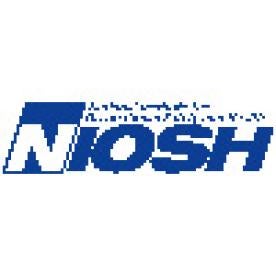Triggered by an annual fatality rate among oil and gas exploration and production workers that for years was seven times the average for all U.S. workers, the National Institute for Occupational Safety and Health (NIOSH) has put together a draft strategic 10-year research plan to address the issue and is seeking comment from stakeholders on its contents.
The oil and gas exploration and production industry consists of operators who control and manage leased areas, drilling contractors who drill the wells, and servicing companies who provide all other types of support operations that involve preparing a well for completion and production. According to NIOSH, 1,189 oil and gas exploration and production workers were killed on the job during 2003-2013. While the industry’s fatality rate remains elevated, recent analyses show that the rate is decreasing despite a decade of rapid growth — a 70% increase in the number of active drilling rigs and a two‐fold increase in the number of workers employed in the industry.
“This plan proposes research and prevention efforts that if successful will improve safety and health in this high‐risk industry,” NIOSH said in a 32-page draft research agenda covering the decade from 2016 to 2025. The plan also includes performance measures that describe specific research activities to be used to guide research, measure progress, and evaluate success. A mid‐course review of progress is planned during 2020. The announcement appeared in the Federal Register on September 21, and comments are due by October 21, 2015.
The plan outlines four research goals. The first is to advance understanding of risk factors associated with injuries, illnesses, and fatalities using epidemiology and surveillance. Through exposure assessment, the second objective, exposure hazards and other health risks will be identified and characterized. Implementing and evaluating controls, particularly engineering solutions, is the third aim. The final objective stresses communications, i.e., to develop and promote the use of NIOSH guidance and recommendations to improve safety and health in the industry.
Certain employer and worker groups in oil and gas exploration and production are at increased risk of being killed on the job, and some of the NIOSH research will focus on them. According to the draft document, in one study, workers employed as contractors, especially drilling contractors, were found to be two-to-three times more likely to be killed on the job than workers employed by oil and gas operators. This is so because these contracted companies are largely responsible not only for drilling wells, but also for completing and servicing them, activities most often associated with fatal events, NIOSH said.
The same study found that workers employed by companies with fewer than 20 workers were five times as likely to be killed on the job as workers employed by large companies. However, NIOSH said its research will be expanded to encompass firms employing fewer than 100 workers. The third group of workers NIOSH identified as at increased risk is employees with less than a year’s experience with their current employer. Where documented, more than half of all fatalities in the industry have occurred among so-called short service employees, NIOSH said.
Transportation incidents were the leading cause of death in the industry, accounting for 40% of all fatalities during 2003‐2013, according to NIOSH. The majority of these (80%) were motor vehicle crashes, with most among occupants of light-duty trucks. In at least half of these accidents, lack of seatbelt use was a contributing factor. The second leading cause of fatalities has been contact injuries, which include being struck by objects or being crushed or caught in equipment.
Researchers identified several knowledge gaps the proposed plan will address. Existing fatality surveillance systems do not contain oil-and-gas-specific variables that would allow for better identification of vulnerable workers and high‐risk activities. In addition, information on non‐fatal injuries and illnesses is incomplete, and little is known about the health hazards that may exist in the many diverse activities in the industry, NIOSH said, adding that the research will be conducted by its researchers and in cooperation with its partners.
Individuals interested in making comments may do so electronically at http://www.regulations.gov. The submittal must include the agency name and docket numbers CDC–2015–0080 and NIOSH–283.




 i
i


